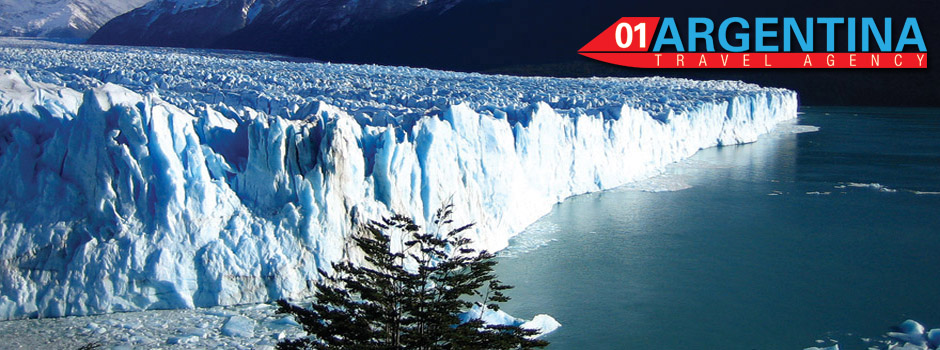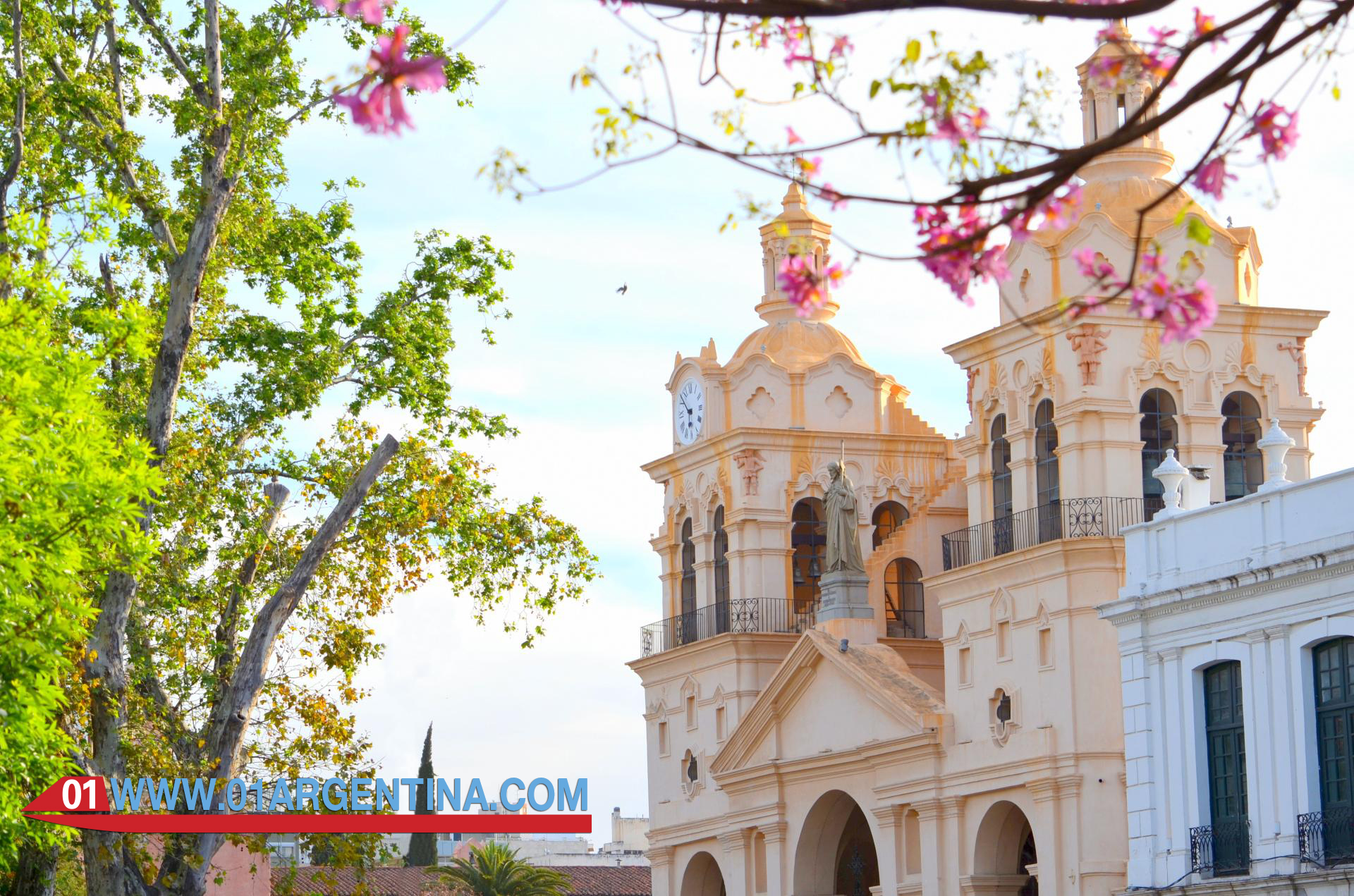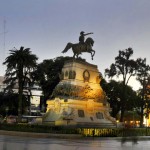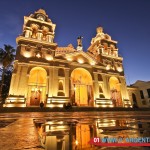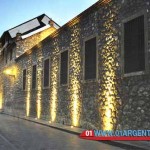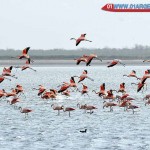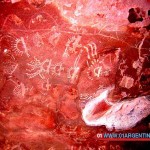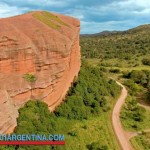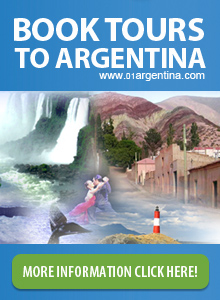WONDERS OF CORDOBA
Taking a tour to Cordoba Argentina is the an opportunity of visiting a corner of the world where the eyes and feelings can vibrate every time, anywhere, because here the constructions of man and natural springs demonstrations have spilled virtues and harmonies.
Through a competition organized by the newspaper La Voz del Interior and sponsored by the Cordoba Tourism Agency, Cordoba elected the 14 Wonders of the Province. The aim was to value, through the vote of the people, the buildings constructed by the hand of man and the natural landscapes that houses our Cordoba.
For each edition of the 30 candidates were nominated, of which only 7. More than 140 thousand people participated in the election, telephone and internet were selected.
Built by the 7 Wonders of Man and the 7 Natural Wonders, they meet today in this calendar, proposing a tour of buildings and natural spaces, which represent a fragment of the identity of the Cordovan.
THE 7 WONDERS CONSTRUCTED BY MAN IN CORDOBA, ARGENTINA
Capuchin Church
Inaugurated in 1933, but fully completed in 1980, The Church of the Sacred Heart of Jesus of the Capuchin Fathers, is a metaphor referring to human existence and their relationship with God. It was built by the architect Augusto Ferrari, who combined elements of Gothic and Romanesque reminiscences. As the building height reaches, its characters symbolically rise closer to heaven.
Location: City of Córdoba. Bishop Trejo corner Buenos Aires – Barrio Nueva Cordoba.
Godfather: Miguel Clariá (Journalist)
Audioguía number: (0351) 5262606/1
La Cañada
Arroyo La Cañada crosses the capital city of Cordoba, and has its birth in the La Lagunilla, natural water mirror located southeast of the city. The construction of the masonry that contains it began in 1671 and was aimed to channel the ferocious floods this stream. The building was inaugurated in 1944, with nearly three kilometers of stone walls and bridges that cross the city.
Location: City of Córdoba. It comprises the section from the street Humberto Primo up
Tronador – Center.
Godfather: Daniel Salzano (Journalist – Author)
Audioguía number: (0351) 5262606/2
High peaks road
Location: Route linking with Punilla Valley Traslasierra Valley.
In 1918 officially it opened the high peaks road, linking the capital with the majestic Cordoba Traslasierra Valley. This path of almost 100 km. extension, suspension bridges and furrowed with pircas the heart of the great mountains. In 1965 the construction of a new road began, with the former and less sinuous trace completely paved. The work was completed in 1988.
Jesuit block
In 1608 work began that led to the current Jesuit Block. It is composed of different buildings that were added progressively: Maximum College, the Church of the Society of Jesus, the Domestic Chapel, the Novitiate and the Monserrat College.
Jesuit Block is the oldest work in the colonial era foot and its importance was recognized by UNESCO declared it a World Heritage Site.
Location: City of Córdoba. It is located between the streets Obispo Trejo, Caseros,
Duarte Quiros and Velez Sarsfield Av. – Barrio Centro.
Godfather: Cristina Bajo (writer)
Audioguía number: (0351) 5262606/5
Tunnels Taninga
Through the Sierras de Pocho, Taninga Tunnels, communicate to the Province of Córdoba to La Rioja valleys. Five open in the mountain cord hanging bridges and some tunnels, make up this impressive work of road engineering. The road that leads to the tunnels was built in 1930, 117 km. Cordoba capital. The landscape is discovered there, it is one of the most beautiful postcards of the province.
Location: west of the Province of Córdoba, on the stretch of National Route No. 20.
Godfather: Dona Jovita (Humorist)
Audioguía number: (0351) 5262606/6
Church
Located in the historic heart of the capital city, the Church of Our Lady of the Assumption is one of the main jewels of colonial architecture Argentina. Since the beginning of its construction in 1580 until the final details added by the renowned artist Emilio Caraffa in 1914, various architectural styles have been reflected in their design. Conceived as a major temple since the founding of Córdoba, the Cathedral is one of the most representative icons of the city.
Location: City of Córdoba. April 27th Independence corner – Center.
Godfather: Reyna Carranza (Writer)
Audioguía number: (0351) 5262606/7
7 Natural Wonders in Cordoba Argentina
Laguna Mar Chiquita
Laguna Mar Chiquita is one of the most extensive and interesting saline wetlands of South America and the world. Located in the northeast of the Province and with an area of 6,000 km2, it is a real inland sea in the middle of the Cordoba plain. In this area, it has developed a complex ecosystem, consisting of abundant flora and fauna. These features have made the Mar Chiquita destination par excellence for the practice of bird watching. Three rivers flow into the Laguna: River Suquía First or the Second or Xanaes and the Rio Dulce
Location: it occupies a portion of the northeast corner of the province of Cordoba, with coasts on
four departments: Rio Seco and Tulumba the east, the department Primero River north and the center of San Justo department.
Godfather: Emiliano Nicola 8periodista)
Audioguía number: (0351) 5262606/8
Cerro Champaquí
Cerro Champaquí has a height of 2790 m, constituting the highest elevation of the Province of Cordoba. This hill has become one of the national references adventure tourism, as it is an ideal place to practice trekking stage, horseback riding, hiking 4 × 4, abseiling and rock climbing ..
Location: on the border between San Javier Calamuchita and departments. With its 2790 meters is the highest mountain in the province of Cordoba.
Reporter: Diaz Lucero (public relations)
Audioguía number: (0351) 5262606/9
Quebrada del Condorito
La Quebrada del Condorito is a gigantic crack 800 meters deep, .ubicada on the eastern slope of the Pampa de Achala. This is a stunning natural setting, ideal for activities related to adventure tourism.
The name carries the Quebrada is well deserved “Condorito” for being a true reservoir of Andean condors, a species that is in danger of extinction throughout South America and in this place, is protected and booming, to from measures of protection on it are developed.
Location: Located in the cord of the Sierras Grandes, it comprises part of the Pampa de Achala and streams that descend from there to the east. It is accessed after a long hike that begins at the Camino de las Altas Cumbres.
Godfather: Flaco Pylos (Humorist)
Audioguía number: (0351) 5262606/10
Cerro Colorado
Cultural Reserva Natural Cerro Colorado, has an area of 3000 hectares and is one of the most important archaeological sites in the country. Its geological formation was eroded by wind and water, creating overhangs and caves which time later the Comechingones Indians used to shape the testimony of his art. Through paintings, made in three colors, Aborigines managed to tell the story of his people.
Location: is the vertex that marks the boundary between the northern departments Sobremonte, Rio Seco and Tulumba. A 160 kilometers north of the city of Cordoba and 11 kilometers from Santa Elena. It is Natural and Cultural Reserve, both pictographs and its flora and fauna.
Godfather: Cristina Loza (writer)
Audioguía number: (0351) 5262606/11
Caves Ongamira
Ongamira is a radiant valley, it emerged in the Cretaceous period millions of years ago. With a landscape to admire indefinitely, these reddish sandstone mountains, have molded shapes. The action of wind and rain, was generated by erosion, mountain caves, achieving unsurpassed natural sculptures
Location: found at 1,500 meters above sea level in the department Ischillín, near the border with the department Punilla, at the base of the triangle that would unite with Capilla del Monte Villa del Totoral and Dean Funes.
Godfather: Gabriel Raies (Automovilista)
Audioguía number: (0351) 5262606/12
Cerro Uritorco
The Cerro Uritorco is located in the Punilla Valley, near the town of Capilla del Monte.
Its name in Quechua language means “Cerro Macho”, in clear reference to its stunning geographical presence. It is the highest peak of the Sierras Chicas, with 1980 m high. His rise comes amid a generous and varied vegetation, between slopes and ponds.
Tourists, explorers and scholars find in this site the true essence of “adventure tourism”. Activities such as hiking, cruise 4 × 4, guided horseback riding and rope routines are just some of the possibilities. In addition, the Uritorco is considered one of the most important energy centers of Argentina ,, attributing mystical and healing benefits.
Location: One of the most imposing hills north end of the Punilla department is located at the height of Capilla del Monte.
Godfather: Tununa Market (Writer)
Audioguía number: (0351) 5262606/13
Cueva de los Pajaritos
La Cueva de los Pajaritos is an incredible expression of nature. It is a grotto where hundreds of birds, find a place of shelter and rest. At dusk, the birds return to their nests, giving visitors a spectacle of impressive singing.
Location: near Tanti, Punilla department, with income from the way Cosquín which is usually used as one of the stages of the World Rally speed.
Godfather: Alejandro Oirado (Actor)
Audioguía number: (0351) 5262606/14
